Mobile Cybercrime Puts Your Business at Risk
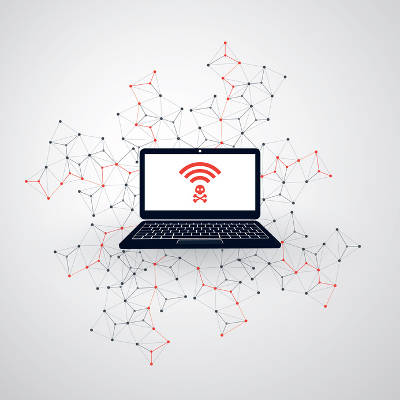
The opening ceremonies of the Olympic games are always a spectacle, and the people of Pyeongchang County in the Republic of Korea didn’t disappoint. While the world watched, behind the scenes there was a cyberattack going on. The attack, carried out by Russian hackers, seemingly retaliating for a nationwide ban placed on their athletes at the games, paralyzed LAN and Wi-Fi communications, prevented tickets from being printed from the Olympics website, and took until 8 a.m. the following day to restore.
Mobile Cybercrime Puts Your Business at Risk
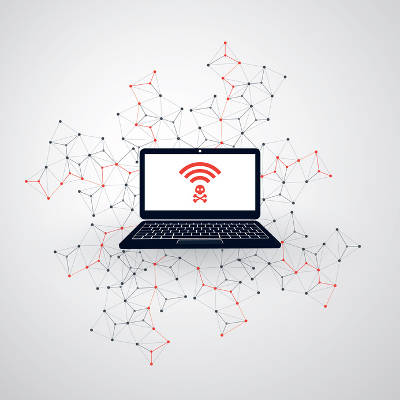
The opening ceremonies of the Olympic games are always a spectacle, and the people of Pyeongchang County in the Republic of Korea didn’t disappoint. While the world watched, behind the scenes there was a cyberattack going on. The attack, carried out by Russian hackers, seemingly retaliating for a nationwide ban placed on their athletes at the games, paralyzed LAN and Wi-Fi communications, prevented tickets from being printed from the Olympics website, and took until 8 a.m. the following day to restore.
Is Your Mobile Device Safe from Malware?
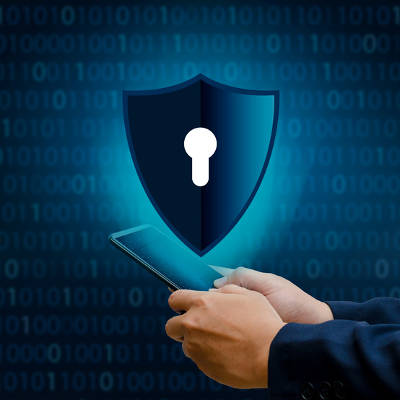
Mobile devices are becoming more important in business use, which means that their security needs to be a serious consideration. While for most of its history, the telephone’s function was limited to sending sound, the new functions that these new mobile devices have give them more utility, but also make them more of a target for threats, including viruses.
Protecting a mobile device against viruses will require the installation of a mobile antivirus solution. This is despite the presence of Play Protect, an internal safeguard that Google has developed to stop malicious applications and updates. Play Protect scans everything in the Play Store, both when it is first added and whenever it is installed on a device, as it works to protect against malware and other threats that target mobile devices. Unfortunately, as security goes, Play Protect isn’t very effective.
On average, real-time malware detection rates hover at 94.8 percent. After four weeks, these rates rise to 96.9 percent. Play Protect’s rates are at 48.5 percent real-time and 66.3 percent after four weeks.
Installing an additional antivirus application can better protect your device. Even better, many of the applications with an above-average detection rate are available for free. By delivering the services of a comprehensive mobile security suite, many of these solutions are very similar to Google Play Protect’s intended purpose. However, some of these apps do have some downsides.
Some antivirus applications, for example Avast Mobile Security and McAfee Mobile Security, rely on ads for support. This may turn some users off. Norton Security Antivirus allows remote locking capabilities, but doesn’t block malicious websites.
Modern business requires a mobile device management strategy that keeps you secure against threats and issues of all kinds. Catalyst Technology Group can help you to identify and implement the security solutions you need, including the ones for your mobile devices. Call (317) 705-0333 for more information.
Is Your Mobile Data Safe?

In 2018 there are certain technologies most businesses have begun to embrace. Cloud computing, high-end network security, collaboration technologies, and some others have begun to be utilized by businesses, large and small, to build a more productive enterprise. Apart from these technologies, there are a few that every business person should know, if only to understand what is possible; and what is on the horizon for their company.
Blockchain
With cryptocurrencies being in the news lately, many people have come to hear the term “blockchain”. This kind of secure ledger technology has many applications from data and application security to communications. The blockchain allows for enhanced and reliable security for data; specifically, the ownership of data.
Internet of Things
The Internet of Things has been growing exponentially every year; and, going forward will have to be an important line item on any business’ mobile device management policy. By communicating with other devices over the Internet, it naturally opens up security issues for any organization. Since a majority of devices will be connected to the Internet over time, businesses will have to take that into account when devising and supporting their mobile device policy.
Chatbots
Many of today’s businesses are utilizing technologies to help them support their products or services. While the importance of maintaining an open line of communication with clients and customers is indisputable, many companies lack the internal resources to dedicate the commitment to comprehensive support. Improvements in chatbot interfaces have made them an increasingly viable option for companies to field incoming messages, as artificial intelligence attends to many concerns and greatly reduces the number of problems that your staff has to deal with.
As a result of these improvements, more industries are likely to increase their use of chatbots for a variety of purposes.
Subscription Model
The ability for most solutions to be delivered and maintained via an Internet connection has led to a shift in software deployment. Instead of needing to buy a new version of the software every year, the subscription model allows companies to pay a monthly fee for the security of knowing that the software they are using is the most recent (and secure) version available.
Automation
It should come as no surprise that a technology that allows focus to be shifted from menial tasks to other, more pressing considerations would be welcomed in the business world. Automation permits exactly this, with artificial intelligence and predetermined processes stepping in and providing certain business needs.
While there are many processes and fields that still require a human touch, automation allows for more time to be committed to them, and less to “busy” work.
Which of these technologies do you see having the biggest benefit for your business? Let us know in the comments, and make sure you subscribe to our blog!
Tip of the Week: Protecting Your Mobile Device in 2 Easy Steps

Mobile devices are one of the greatest tools available for business use today. However, because society has come to rely so much on mobile devices, these devices have become a treasure trove for cybercriminals to obtain information from. For this week’s tip, we’ll go over some simple ways to protect yourself from such threats.
Do You Really Need to Connect?
Wi-Fi and Bluetooth connectivity give our phones a heightened level of utility, but this benefit can also come with severe risks. Mobile devices, for the sake of simplicity and convenience, are ready and willing to connect with any Wi-Fi or Bluetooth signal they can. Unfortunately, this puts them at risk of being hijacked by any threat that may be lurking on the signal.
To mitigate this risk, make sure that you aren’t connecting to Wi-Fi or Bluetooth signals that aren’t secure and trustworthy. In fact, when not using them, keep these connections disabled just in case.
The same goes for public charging stations. These can also be used to spread threats, so it is better to rely on a portable charger or a wall outlet to power your device.
Furthermore, if you are connecting to something, make sure you aren’t sharing more than you need. For instance, if you need to rent a car while on a business trip, there’s nothing wrong with using Bluetooth to make hands-free calls. However, if prompted, there is no reason to sync your contacts with the car’s storage, effectively handing them to the next person that rents that car. Being cautious as you connect will only help you to stay safe in the long run.
Keep it Locked Up
The contents of your phone shouldn’t be available to just anyone who picks it up. Whether you have access to sensitive business information through the device, or you have apps that help you manage the rest of your life, your information is at risk unless you have protections in place to keep it safe.
The simplest way to do so is to leverage the phone’s built-in security features. Whether your phone accepts PIN numbers, passcodes, or a pattern set it up so that only you know how to open it. Furthermore, with more devices today leveraging biometric and facial recognition technology, there are other means for you to secure your mobile device.
Security is a crucial consideration to keep in mind, whenever you’re using a mobile device. For more information on how you can keep your business resources safe from threats in and out of the office, reach out to Catalyst Technology Group at (317) 705-0333.
Which is More Secure, Your Mobile Network or Wi-Fi?

For the modern business, having a strategy to manage your employees smartphone use is essential. This is because most of the people that work for you have smartphones. One study shows that upwards of 90 percent of people under 30 own a smartphone. If you have any design on running a business, or employing millennials (who are the largest generation in the current workforce), you’ll need to know what you are doing to protect your business from the increasing amount of threats that are out there targeting smartphones.
An annual Wi-Fi Security Report conducted by Wandera found that, out of a sample of 100,000 corporate-owned mobile devices, 74% of wireless data was transferred using a Wi-Fi network, 12 percent of Wi-Fi hotspots used by those people are open and lacking encryption, and only four percent of these corporate-owned devices have been exposed to malware through an accidental or deliberate man-in-the-middle attack.
The man-in-the-middle attack (MiTM) is one where a computer will pick up malware that allows an intermediary to intercept files and correspondence between the two machines, and upon connecting to a network via a Wi-Fi connection, transfers the malware onto the computing network–thus infecting the network with the malware that allows the hacker to intercept any communication.
It’s largely understood that cellular networks are more secure than Wi-Fi networks, as cellular networks utilize high-end encryption techniques. This doesn’t make them popular, however. People will typically use Wi-Fi that is available. In fact, one statistic suggests that people are so addicted to the use of Wi-Fi that upwards of 60 percent of people will connect to any available public Wi-Fi rather than use the cellular data, even if they don’t pay for it themselves. Symantec’s Wi-Fi Risk Report corroborates this notion, adding that roughly the same number of people believe their personal information is more secure transmitted over Wi-Fi, and that 53 percent cannot tell the difference between a secure and unsecure Wi-Fi network. The report goes on to state that nearly nine out of ten consumers have put their information at risk by using public Wi-Fi.
At the business level things get a little better. While individual Wi-Fi use remains similar, businesses typically do a much better job of securing their network to keep malicious entities out. One way they do this is by setting up a firewall to keep their Wi-Fi networks away from the rest of their network. Typically, when a person accesses your organization’s Wi-Fi, they are then able to access your whole entire network. If your servers and other confidential data are linked to your organizational Wi-Fi, then an intruder who can manage to connect will then have access. By separating your Wi-Fi from your network behind a firewall, you will not only protect yourself from ambitiously malignant people on your network, but also go a long way toward safeguarding your network from cyber attacks in general.
Another way that the business can ensure their mobile strategy won’t hamstring their company’s network is by instituting a Virtual Private Network (VPN). The VPN brings additional encryption to data communication by creating a secure tunnel in which to transfer data. For the small business a VPN has become an almost essential part of providing your staff with a workable remote computing situation. Not only does it work to secure your business’ data while using available remote connections, it makes it easier to scale a business by allowing new systems to connect to it with minimal configuration. In doing so, the deployment of a strategic VPN reduces capital investment and is a major benefit for organizational mobility.
If you haven’t already, your business is going to have to address your mobile security before it gets burned. If you would like to learn more about what you are up against, or how you can utilize today’s security technology to protect your business’ important data, call Catalyst Technology Group today at (317) 705-0333.
What Are the Problems with Mobile Payment?

Internet commerce has created a vast market for digital payment. With Near Field Communication (NFC) built into almost every smartphone, some of the major financial services companies in the world have created mobile payment platforms that they have advertised as being a fast and secure option for consumers who want to use their smartphones to make retail payments. While this technology has been around for a few years now, not many people utilize it frequently. Here are four reasons mobile payment hasn’t taken off.
Traditional Payment Types Work
Even in a society where the gold standard is more of a marketing ploy than anything else, cash is still extraordinarily useful. As a result, many people simply use methods of payment they’ve been using for decades. First Annapolis Consulting’s “Study of Mobile Banking & Payments” states that while 64 percent of all smartphone users have used some form of mobile payment platform, only a measly five percent consider themselves frequent mobile payment users. This shows that while it may work for the time that you forgot your wallet in the car, most of the time users will stick to what they know.
What Incentive Is There to Use Mobile Payment?
Mobile payment services have grown more sophisticated over the years, and some states have undergone a shift to a digital ID system. Your first thought might be that this completely eliminates the wallet, but how secure are these digital representations of formerly physical identifiers? The ID? The credit card? These constructs have worked for decades and you can see how users will need some form of incentive to move away from them.
Moreover, mobile payment services have, in the past, made it difficult for users to redeem their loyalty points with the use of a mobile point of sale machine. Take, for example, Starbucks, which uses loyalty points that are exchanged through a mobile payment platform. Their mobile application takes both the loyalty points and mobile payment and combines them into one easy way to earn back value as a customer. Just like the consumer, a company won’t want to invest in a solution if it’s not something that will produce a sense of long-term value.
Therefore, the best way to convince users that a mobile payment platform is the right way to go, is to ensure that they get some sort of value from it.
Mobile Payment Requires Considerable Effort
One of greatest benefits of mobile payment is that it’s a much easier method of payment than others. All you need to do is “tap and go.” However, it can still take more time than you think to open up a smartphone app and make a payment. In fact, it can take just as much time as it would to take out your card and make a normal payment. With a mobile payment system, you take your phone out, unlock it, access the mobile wallet app, and select which card you’re going to use. You then have to hold your phone to the terminal. Finally, you need to sign a receipt or a screen and provide a PIN. While it might offer an interesting alternative to traditional payment options, it’s still a pain, and you need to remain cognizant of this fact.
Mobile Payment Means Security Issues
As is the case with most digital systems, there is a considerable convenience at the cost of security, in most cases. It’s not an uncalled-for concern–in fact, countless people suffer from data breaches at banks, stores, and other major online retailers on a daily basis. Why would mobile payments be any different?
The cybersecurity industry has expressed a cautious optimism of payment applications. A 2015 Mobile Payment Security Study urges users to wait and see what the results of such applications are, but it does acknowledge that there has been considerable progress made in this sector. The security of mobile financial transactions has made leaps and bounds, including account tokenization, cryptograms, and multi-factor authentication–all to keep security at an all-time high for mobile transactions.
What will the future hold for mobile payments and transactions? Catalyst Technology Group can help you implement mobile solutions designed to augment your operations. To learn more, reach out to us at (317) 705-0333.
LeakerLocker Takes Exposure to New Heights By Sharing Your Mobile Browser History
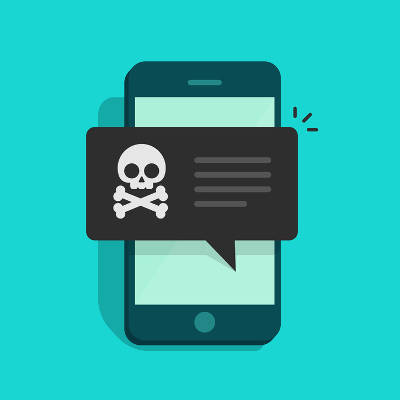
Ransomware, the malware that locks down its victim’s files until they pay up, has always been a frustrating issue to deal with. However, a recent mobile ransomware will make the issue a little more personal… by sharing the victim’s mobile browsing history.
This introduces an important question: how much is it worth to you for your browsing history to kept secret? According to LeakerLocker, the answer is $ 50. This Android malware will steal the user’s browsing history, along with photos and videos from the device, any Facebook messages, and the user’s location history, all along with other sensitive information the mobile device has access to.
Admittedly, considering what many may have on their phones that they don’t want others to see, LeakerLocker utilizes a potent motivation: the fear of embarrassment. Think to yourself for a moment–do you have anything on your phone that you’d rather not anyone else know about?
LeakerLocker asks, is $ 50 enough to keep your secrets hidden from view?
Unlike many examples of ransomware, the researchers at McAfee have discovered that LeakerLocker seems not to encrypt any data. Rather, the ransomware allegedly takes a backup of all information on the infected device, which is then used to blackmail the owner into paying up.
This ransomware was spread via two Google Play Store apps, Wallpapers Blur HD and Booster & Channel Cleaner Pro. These fraudulent applications have since been removed. A major red flag for these apps were the incredible amount of permissions that LeakerLocker obtained through them. These apps requested the ability to both read and send messages, manage the device’s calls, and access the contact list. Once approved, LeakerLocker shuts the user out of the device and demands its ransom through the lock screen–and thanks to the access the user had just given the app, it can easily seem that paying the ransom is the only option.
However, there is no way of knowing for sure if LeakerLocker has actually accessed the data it claims to. Having said that, it has been confirmed that the ransomware can access the device’s browsing history, along with text and email messages, the device’s calling history, and yes, camera images.
As we recommend when someone is dealing with any form of ransomware, paying the ransom will almost certainly do you no good. Where’s the guarantee that the hackers haven’t scammed you out of the cost of your data, and that the money you’ve given them won’t finance their next heist?
If you have concerns with keeping your data secured and your business safe from threats like LeakerLocker and the many ransomware variants out there, reach out to us. We can help to make sure your network is as secure as possible, from the software all the way to the employees who use it. Call us at (317) 705-0333 for more information.
2-in-1 Mobile Devices Give Businesses the Best of Both Worlds
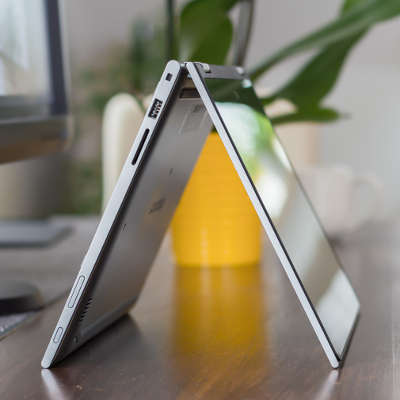
As computing and business have become more intertwined, it has become more important for software solutions and other business-essential tools to be ready at a moment’s notice. This tendency has contributed to the rise of mobile solutions, although there is still a need for the power a desktop provides. That’s why we are big fans of convertible ultrabooks, or 2-in-1 devices.
These versatile solutions offer the best parts of both mobile and desktop computing experiences, and are right for the business user.
Consolidation and Cost Savings
Perhaps most important to many business users is the potential cost savings that a convertible laptop brings with it. Since it serves as both a laptop and a tablet, you can avoid shelling over additional funds to supply your workforce with both solutions. Plus, since it can serve as a desktop workstation when it has been docked, a single device could foreseeably fulfill every computing need your employees have.
Functionality
Windows 10 was specifically designed to work with 2-in-1 devices. This is why the transition from laptop to tablet is comparatively seamless, and running multiple applications is equally simple. It also should be said that these devices have the power to do anything that a typical laptop can handle.
This does mean that most 2-in-1s won’t meet the standards that serious graphic designers, video editors, or similar occupations will demand of them, but there are even a few options that will fit the bill for this level of use. Some 2-in-1s will include a built-in stylus for exactly this purpose.
In addition to the abilities that the devices themselves boast, they also permit the user to interact with them in the way that the user prefers–namely, whether to use a mouse or the touchscreen. This is especially important, considering the prevalence of touchscreen-based devices in everyday life. This functionality in a 2-in-1 solution means that habits from the rest of life are more easily translated over to work computing, boosting productivity and enhancing efficiency.
Flexibility
This benefit is a pretty straightforward one: a 2-in-1 device can adapt to serve pretty much any purpose you could have in the office environment. Whether you need a laptop to type at or a quick video screen to showcase a presentation, these devices can do it all, and then some.
If you agree with us and think that 2-in-1 devices may just be the best choice for your business, give us a call at (317) 705-0333.
Statistics Show How Mobile Devices Can Threaten Your Business

While mobile devices like smartphones and laptops have allowed modern employees to keep up with their workload and improve flexibility, they are also a significant threat to your organization’s data. Therefore, you need to consider how these mobile devices will affect your business’s IT strategy. Even if you haven’t, it’s likely that someone in your organization has considered it
Gartner conducted a large survey last year that came to the following conclusions:
- 8 out of 10 employees use personal devices with them to the office.
- 37 percent of employees are given laptops by the employer.
- 23 percent of employees surveyed are given company-provided smartphones, but only 10 percent of them don’t use their own personal device.
- Only 20 percent of employees given a work device were unsatisfied with it. The satisfaction rate is usually higher among those who are given smartphones, compared to those who are given desktops or laptops.
- Over half of all employees who use their smartphones for work use their own personal device.
- Two-thirds of employees use a personal device for work, including a smartphone, tablet, or laptop.
While your business may have gone the extra mile to protect its data, as well as access to internal files and email, personal devices add a new level of complexity to your strategy.
What Are Some of the Risks?
If you let mobile devices onto your company network haphazardly, there will be plenty of risks associated with them. This is why mobile devices are such a controversy in the first place, and why employers go to such lengths to control their use in the workplace.
Lost devices could potentially give strangers, or even thieves, access to your company’s email, which can include anything from sensitive client information to sensitive information like passwords or usernames. Furthermore, if a personal laptop gets hacked or infected by malware (or worse), the infection could spread to your network. Even something as simple as a public Wi-Fi connection could put your business’s data or passwords at risk.
Now, consider what happens when an employee leaves your organization. If they are using a personal device for work-related tasks, they could have contact lists, files, or other information that you don’t want them to have anymore–especially if they leave on bad terms. The resulting fallout could have you in damage control mode for far too long to make mobile devices worth it.
Let Us Help with BYOD
With a Bring Your Own Device policy, your organization will be prepared to properly leverage employee-owned personal devices. If you want to use devices without placing your data at risk, a well-rounded plan that covers all your concerns is the best way to do this. To learn more about BYOD and how you can keep your sensitive data safe, even on mobile devices owned by your employees, reach out to Catalyst Technology Group at (317) 705-0333.

